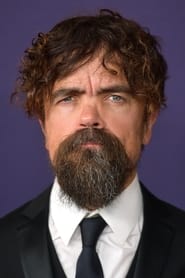
Ask Your Own Question
What is the plot?
"Religions of Westeros" is a documentary-style special that explores the various religions practiced in the world of Westeros, rather than following a traditional narrative structure with a plot. The episode delves into the beliefs, rituals, and histories of the different faiths that exist within the realm, providing insights into how these religions influence the characters and events of the main series.
The episode begins with an overview of the Faith of the Seven, the predominant religion in the Seven Kingdoms. It describes the Seven as a single deity with seven aspects: the Father, the Mother, the Warrior, the Maiden, the Smith, the Crone, and the Stranger. The narrator explains the significance of the Faith's symbols, such as the seven-pointed star, and the role of the High Septon, the religious leader who guides the faithful.
Next, the special shifts focus to the Old Gods of the Forest, worshipped primarily by the Free Folk beyond the Wall. The episode illustrates the connection between the Old Gods and nature, emphasizing the sacred groves and weirwood trees that serve as places of worship. It highlights the belief in the spirits of the forest and the importance of honoring the past, as well as the cultural practices of the Northmen who revere these ancient deities.
The narrative then transitions to the Lord of Light, a faith that has gained prominence through characters like Melisandre and Stannis Baratheon. The episode details the duality of light and darkness in this religion, explaining the significance of fire and the belief in the resurrection of the dead. It showcases the rituals performed by followers of the Lord of Light, including sacrifices and the use of flames for divination.
Following this, the special explores the Drowned God, worshipped by the Ironborn. The episode describes the harsh and unforgiving nature of this faith, which emphasizes strength and the sea. It details the unique rituals of the Ironborn, such as the drowning ceremony, where followers are submerged in water to symbolize death and rebirth.
The episode also touches on the Many-Faced God, the deity of death worshipped by the Faceless Men of Braavos. It explains the belief in the sanctity of death and the idea that all gods are one. The special highlights the mysterious practices of the Faceless Men, including their ability to change faces and their role as assassins.
Throughout the special, various characters from the series provide commentary on how their beliefs shape their actions and decisions. The episode intersperses these insights with clips from the main series, illustrating the impact of religion on the political landscape of Westeros and the personal struggles of key characters.
The special concludes by reflecting on the complexity of faith in Westeros, emphasizing that religion is not just a backdrop but a driving force that influences the motivations and destinies of the characters within the story.
What is the ending?
In the episode "Religions of Westeros," the focus is on the various faiths that exist within the world of Westeros, exploring their beliefs, practices, and the impact they have on the characters and the overarching narrative. The episode does not have a traditional ending with a climax or resolution, as it serves more as an exploration of the different religions rather than a storyline with a definitive conclusion.
As the episode unfolds, it begins with an introduction to the Faith of the Seven, the predominant religion in the Seven Kingdoms. The scene opens in a grand sept, where the Seven are represented by their seven aspects: the Father, the Mother, the Warrior, the Maiden, the Smith, the Crone, and the Stranger. The narrator explains the significance of each aspect, emphasizing the moral and ethical guidelines they provide to their followers. The visuals depict the ornate architecture of the sept, with stained glass windows casting colorful light on the worshippers below, creating a sense of reverence and solemnity.
Next, the episode transitions to the Old Gods of the Forest, worshipped primarily by the Free Folk beyond the Wall. The scene shifts to a dense, ancient forest, where we see the weirwood trees with their distinctive white bark and red sap. The narrator describes the connection between the Old Gods and nature, highlighting the spiritual practices of the Northmen, who seek guidance from the trees. The atmosphere is mystical, with the sound of rustling leaves and distant animal calls, evoking a sense of ancient wisdom and primal connection to the land.
The episode then explores the Lord of Light, a faith that has gained prominence through characters like Melisandre and Stannis Baratheon. The visuals depict the fiery rituals associated with this religion, including the burning of sacrifices and the use of fire as a means of divination. The narrator discusses the duality of light and darkness, emphasizing the struggle between good and evil that is central to the beliefs of the followers of R'hllor. The scenes are intense, filled with flickering flames and the fervent expressions of the worshippers, showcasing their deep conviction and the lengths they will go to in their faith.
As the episode progresses, it touches on the Drowned God, worshipped by the Ironborn, and the beliefs surrounding death and rebirth. The visuals shift to the stormy seas and rugged coastlines, where Ironborn perform their rituals, including the drowning and resuscitation of followers as a rite of passage. The narrator explains the significance of the sea in their culture, highlighting the Ironborn's fierce independence and their belief in taking what they desire.
The final segment of the episode delves into the Faith of the Seven's influence on the political landscape of Westeros, particularly through characters like Cersei Lannister and the High Sparrow. The visuals depict the tension between the crown and the faith, showcasing the power struggles that arise when religion and politics intersect. The narrator emphasizes the consequences of these conflicts, illustrating how faith can be both a source of strength and a tool for manipulation.
Throughout the episode, the emotional states of the characters are reflected in their devotion and the rituals they perform. The fervor of the worshippers, the solemnity of the rituals, and the conflicts that arise from differing beliefs all contribute to a rich tapestry of faith that permeates the world of Westeros.
In conclusion, "Religions of Westeros" serves as a deep exploration of the various faiths that shape the characters and their motivations, illustrating how belief systems influence actions and decisions in the complex political landscape of the series. The episode does not provide a traditional ending but rather leaves viewers with a greater understanding of the spiritual dimensions that underpin the narrative of Game of Thrones.
Is there a post-credit scene?
In the episode "Religions of Westeros" from the "Game of Thrones" specials, there is no post-credit scene. The episode focuses on exploring the various religions and belief systems present in the world of Westeros, including the Faith of the Seven, the Old Gods of the Forest, the Lord of Light, and the Drowned God, among others. It delves into the significance of these religions in shaping the characters' motivations and the political landscape of the realm. The episode concludes without any additional scenes or content after the credits.
What are the main beliefs of the Faith of the Seven?
The Faith of the Seven is the predominant religion in the Seven Kingdoms of Westeros, worshipping seven aspects of one god: the Father, the Mother, the Warrior, the Maiden, the Smith, the Crone, and the Stranger. Each aspect represents different virtues and roles in life, and followers often pray at septs, which are places of worship. The Faith emphasizes morality, justice, and the importance of family.
How does the worship of the Old Gods differ from the Faith of the Seven?
The Old Gods are worshipped primarily in the North and are associated with nature and the weirwood trees, which are sacred to the followers. Unlike the organized structure of the Faith of the Seven, the Old Gods are worshipped in a more personal and less formal manner, with rituals often taking place in the woods. The Old Gods represent a connection to the land and the ancient traditions of the First Men.
What role does the Lord of Light play in the lives of characters like Melisandre and Stannis Baratheon?
The Lord of Light, or R'hllor, is a fire deity worshipped by Melisandre, who believes she is a chosen servant. She uses her powers to influence Stannis Baratheon, convincing him that he is the prophesied hero, Azor Ahai. Melisandre's faith drives her actions, leading to significant and often dark consequences, including the sacrifice of Stannis's daughter, Shireen, in a desperate bid for victory.
What is the significance of the Ironborn's worship of the Drowned God?
The Ironborn worship the Drowned God, who represents the sea and the harsh life of the Iron Islands. Their religion emphasizes strength, bravery, and the acceptance of death at sea as a noble fate. The Ironborn's rituals, including the drowning and resuscitation of initiates, reflect their belief in the power of the sea and the importance of raiding and pillaging as a way of life.
How does the Faith Militant influence the political landscape in Westeros?
The Faith Militant, a military order of the Faith of the Seven, rises to power during the events of the series, particularly under the leadership of the High Sparrow. Their influence grows as they enforce religious laws and punish those they deem sinful, leading to significant political upheaval. Their actions challenge the authority of the crown and create tensions between the church and state, impacting key characters like Cersei Lannister.
Is this family friendly?
"Religions of Westeros" from the "Game of Thrones" specials delves into the various belief systems present in the world of Westeros, exploring themes that may not be suitable for children or sensitive viewers.
Potentially objectionable or upsetting aspects include:
-
Violent Imagery: The episode discusses the violent histories associated with certain religions, which may include graphic descriptions or visuals of battles and sacrifices.
-
Dark Themes: The exploration of faith often intersects with themes of death, sacrifice, and the darker aspects of human nature, which could be unsettling.
-
Supernatural Elements: The portrayal of gods and mythical creatures may be frightening for younger viewers, particularly the more sinister interpretations of these beings.
-
Religious Conflict: The episode addresses conflicts and wars driven by religious differences, which may be complex and distressing for children to understand.
-
Mature Concepts: Discussions around power, manipulation, and the consequences of blind faith may be too mature for younger audiences.
Overall, the content is more suited for an adult audience due to its complex themes and mature subject matter.
























